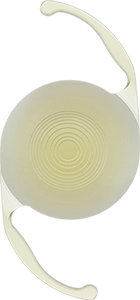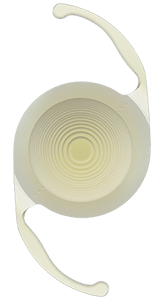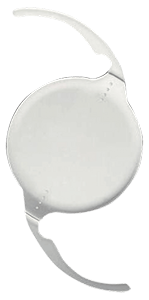Cataract
At Chicagoland Retina, Ltd., our team of eye doctors specializes in diagnosing and treating cataracts to help you regain clear vision.
What is a Cataract?
A cataract is a common eye condition that affects the natural lens of the eye, causing it to become cloudy over time. This clouding of the lens can lead to blurry vision and increased glare, among other symptoms. Eventually, cataracts can significantly interfere with your everyday life, making daily activities like reading, driving, and recognizing faces challenging. While cataracts are typically associated with aging, they can also be caused by genetics, injury, or certain medical conditions like diabetes. The only way to restore vision affected by cataracts is through cataract surgery.

How Do I Know When It’s Time for Cataract Surgery?






Determining the right time for cataract surgery involves considering the impact of cataracts on your quality of life. Some signs that you might be ready for cataract surgery include:
Blurred Vision: If your vision is significantly blurry, even with glasses or contacts, it may be time for cataract surgery.
Difficulty Performing Daily Activities: When cataracts interfere with tasks like reading, driving, or recognizing faces, surgery can help restore your independence.
Glare and Halos: Increased sensitivity to glare and halos around lights, especially at night, may mean it’s time for cataract surgery.
Are You a Candidate for Cataract Surgery?
Take our self-test and find out!
What Happens During Cataract Surgery?
Cataract surgery is a safe and gentle procedure that aims to restore clear vision by replacing the cloudy natural lens with a special artificial lens called an intraocular lens, or IOL. First, your cataract surgeon will use eye drops to numb the surface of your eye, ensuring your comfort during the short procedure. Then, they will carefully make a tiny incision in your cornea, the front part of your eye, to access the natural lens where the cataract is. This incision is so small that you won’t need any stitches after the procedure. Next, your cataract surgeon will use modern techniques to break up and remove the cloudy lens from your eye. After your natural lens is removed, they will insert the new artificial lens, called an IOL, into your eye and position it. The procedure is typically completed on the same day. Many people notice an immediate improvement in their vision, while others may take a few days to weeks for their vision to clear.
What IOL Options Are Available?
Several types of IOLs are available to achieve various vision goals after cataract surgery. The choice of IOL depends on factors such as your lifestyle, vision goals, and budget. At Chicagoland Retina, Ltd., we offer the following IOL options:
Monofocal IOL
This traditional IOL provides clear vision at one focal point, usually for distance vision. Patients who choose a monofocal IOL may still require glasses for reading or close-up tasks.

Vivity IOL
The Vivity IOL is designed to provide an extended depth of focus, reducing the need for glasses across a range of distances.

PanOptix IOL
The PanOptix IOL is a multifocal lens that offers improved vision at varying distances, reducing dependence on glasses for both near and far vision.

Toric IOL
Specifically designed for patients with astigmatism, this IOL corrects both cataracts and astigmatism, enhancing overall vision.

What about Advanced Cataract Surgery with LenSx Laser?
At Chicagoland Retina, Ltd., we offer state-of-the-art cataract surgery, including the use of the LenSx laser system. This cutting-edge femtosecond laser technology enhances the precision and safety of cataract surgery, ensuring optimal outcomes for our patients.
Benefits of LenSx Laser Cataract Surgery
Precise Incisions: The LenSx laser creates precise incisions in the cornea, allowing for a more predictable and accurate surgical process. This precision reduces the risk of complications and promotes faster healing.
Customization
The surgeon can tailor the surgery to each patient’s unique eye anatomy, optimizing IOL placement for improved vision.
Reduced Risk
The precision of the laser reduces the risk of complications and post-operative issues and can reduce the amount of ultrasound energy needed to break up and remove the cataract, which may benefit patients with certain eye conditions.
Astigmatism Correction
For patients with astigmatism, the LenSx laser can correct this refractive error during cataract surgery. This can reduce or eliminate the need for glasses after the procedure.
Faster Recovery
Patients often experience quicker healing and visual improvement after LenSx laser cataract surgery.
At Chicagoland Retina, Ltd., our team of experienced cataract surgeons offers advanced cataract solutions tailored to your unique needs. By understanding the cataract surgery process and exploring the various IOL options available, you can make an informed decision about your vision health and reclaim the clarity you deserve.
Are you experiencing symptoms of cataracts? Schedule a cataract evaluation at Chicagoland Retina, Ltd. in Addison, IL, today!
Disclaimer: This webpage is intended for informational purposes only and does not replace professional medical advice. If you suspect you have dry eyes or are experiencing any eye-related symptoms, please consult with an eye care specialist for a proper evaluation and treatment plan.
